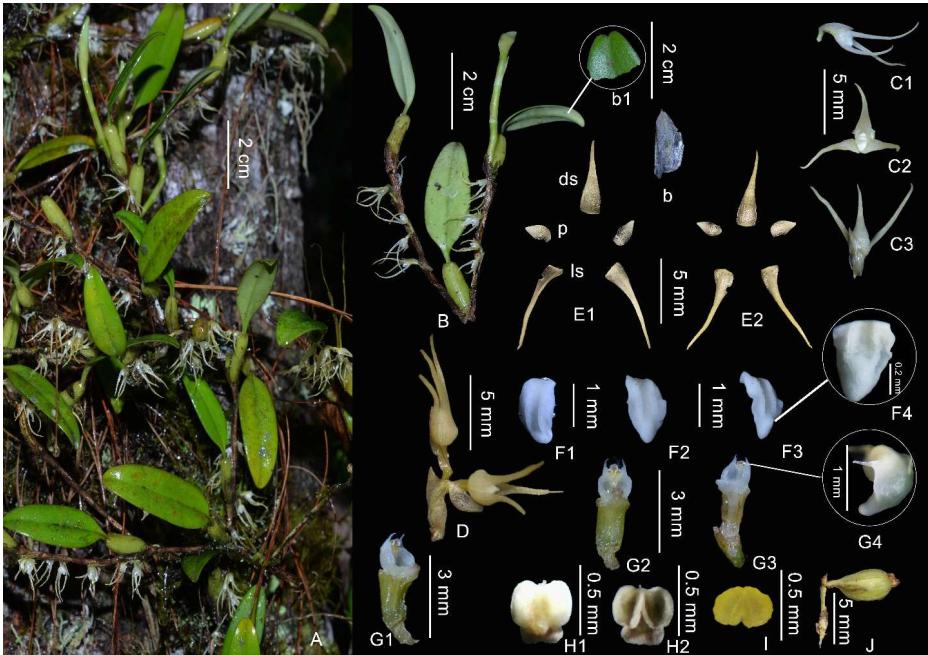Bulbophyllum is one of the largest genera in the Orchid family with about 2200 species, and widely distributed in the tropics and subtropics. During the course of botanical explorations in southeastern Xizang in 2020–2022, researchers collected several Bulbophyllum specimens with similar habits and floral characteristics and transplanted them to the orchid conservation center of Tibet Agriculture and Animal Husbandry University.
The researchers from Xishuangbanna Tropical Botanical Garden (XTBG) and Tibet Agriculture & Animal Husbandry University carried out a thorough examination of morphology and further comparative study with the specimens at herbaria, and a survey of literature. They revealed that those specimens belong to B. sect. Desmosanthes and could be classified into three entities, one identified as B.stenobulbon, the other identified as B. cauliflorum , however, the third one was apparently different from those two species and belongs to a previously undescribed species.
After careful morphological studies, the researchers confirmed it as a species new to science. They named it as Bulbophyllum basiflorum to refer to the racemes that adhere to rhizomes in this species.
The new species was published in Taiwania.
Bulbophyllum basiflorum is morphologically similar to B. cauliflorum and B.
stenobulbon, but can be clearly distinguished from them by having shorter scapes adhering to rhizomes and pseudobulbs, raceme dense with 1 or 2 flowers, petals ovate, lip white with 2 longitudinal ridges, and very short
column foot.
Bulbophyllum basiflorum is collected from Dexing and Beibeng village of Mêdog, Xizang, China. It was found growing epiphytically on tree trunks in evergreen broad-leaved forest at an elevation range of 730–1579 m.
"During our field investigations B. basiflorum is currently known only from Mêdog county, four populations of about 20 individual plants were found. We regard its status as Data Deficient following IUCN guidelines,” said LUO Yan of XTBG.
Contact
LUO Yan Ph.D
Center for Integrative Conservation, Xishuangbanna Tropical Botanical Garden, Chinese Academy of Sciences, Menglun, Mengla, Yunnan 666303, China
E-mail: luoyan@xtbg.org.cn

Bulbophyllum basiflorum (Image by LI Mengkai)

